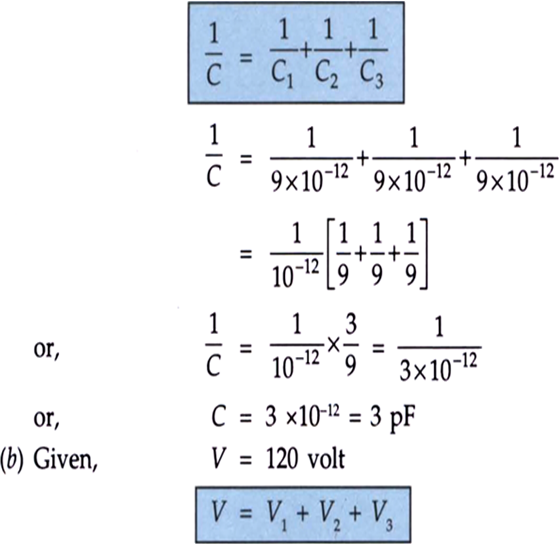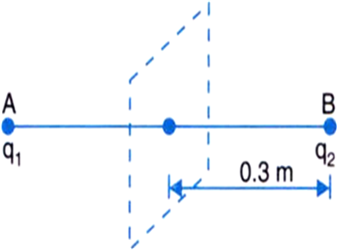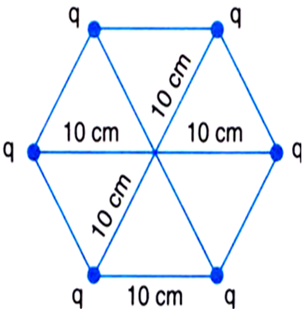
Three capacitors each of capacitance 9 pF are connected in series:
(a) What is the total capacitance of the combination?
(b) What is the potential difference across each capacitor if the combination is connected to a 120 V supply?


Two charges 2μC and –2μC are placed at points A and B, 6 cm apart.
(a) Identify an equipotential surface of the system.
(b) What is the direction of electric field at every point on this surface?
Given,






A spherical conductor of radius 12 cm has a charge of 1.6 x 10–7 C distributed uniformly on its surface. What is the electric fields
(a) inside the sphere,
(b) just outside the sphere,
(c) at a point 18 cm from the centre of the sphere?
Given,
(a) Since, charge resides on the outer surface of the sphere, magnitude of electric field is 0 inside.
(b) Electric field just outside the sphere is given by
(c) At a point 0.18 m from the centre of the sphere
